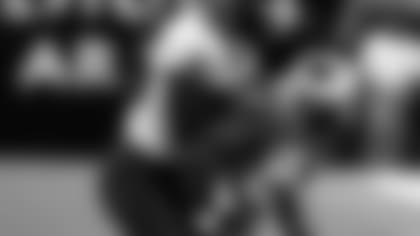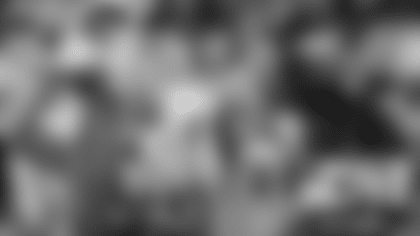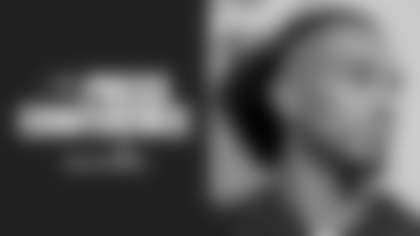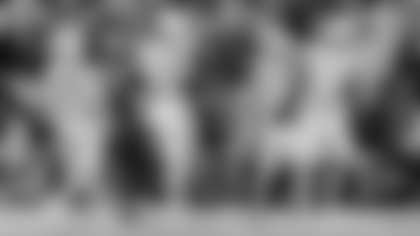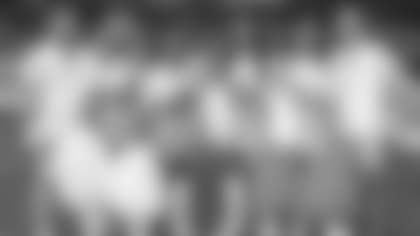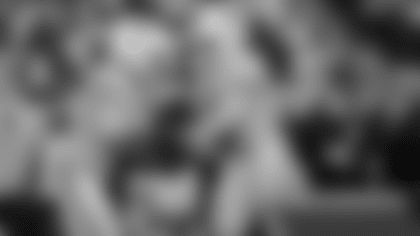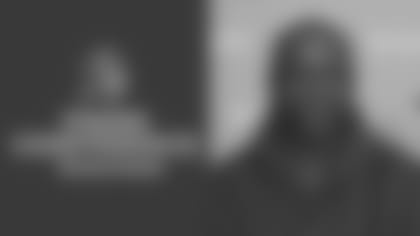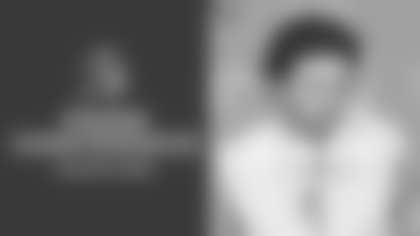Before his injury in early October, CB Brian Kelly was off to another hot start in 2003, breaking up five passes in the Bucs' first three games
In the October 6 Monday Night Football game between Tampa Bay and Indianapolis – on which we will do our best not to dwell – Colts receiver Marvin Harrison caught 11 passes for 176 yards. Though two of those catches went for touchdowns and three covered 28 yards or more, it was Harrison's first grab of the night, a little three-yarder in the middle of a three-and-out series, that did the most damage to the Buccaneers' season.
Harrison got just a short gain on the play because he was met almost immediately by Tampa Bay cornerback Brian Kelly. Simply one of the best tacklers in the business at his position, Kelly wrapped Harrison up securely, then ended up at the bottom of a pile of bodies.
There is a similar pile at the end of almost every NFL play, and most of them disentangle without incident. On this occasion, however, as Harrison jumped up out of the scrum, Kelly's left arm was pinned against the ground while the rest of his body was pulled in another direction. The result was a torn left pectoral muscle for the sixth-year corner and, after one gritty attempt to play through the painful injury, an end to his 2003 campaign.
Kelly's injury wasn't extremely unusual, though you certainly hear a lot more about sprained knees and dislocated shoulders in an average NFL medical wrap-up. Tearing the pectoral isn't all that rare, but ripping it clean off the shoulder to which it is anchored is less common. A surge in the wrong direction by the pile, and it was over in an instant.
"It just snapped out," said Kelly. "A lot of people get similar injuries, though most of the time you don't tear it completely off the bone. It was a freak thing, the way it happened. It was very uncommon."
Kelly sat out the subsequent game, a 35-13 win at Washington, then returned to the starting lineup in San Francisco on October 19. The first approach was to see if he could finish the season without repairing the injury; the team knew he would be limited in some areas but still preferred a restricted Kelly to no Kelly at all.
Kelly knew his main weakness would be an inability to pull with his left arm, which would force him into some difficult tackling positions. Before it even got to the point of adjustments, however, the issue came to a head. San Francisco wide receiver Tai Streets got open down the right sideline and had a Jeff Garcia pass headed in his direction when Kelly did what he had to do, reaching out with his left arm to pull Streets down.
That sacrificial play probably prevented a big gain (though Kelly was flagged for pass interference), and the 49ers' drive fizzled out near midfield. But Kelly's season was over.
He had surgery two weeks later and began his rehab program shortly thereafter, near the end of November. He's been working hard ever since and, four months later, with the Bucs' 2004 offseason conditioning program lurking just around the corner, Kelly believes he is fully recovered.
"It's going well," said the former USC standout. "I've been training for the past four or five months. We took it slow at first, but right now it's full go as if it was not injured."
Fortunately, as much as the description of Kelly's injury may make you wince, it is not one that is too hard to overcome. Had Kelly suffered a more common ACL tear in one of his knees, in contrast, he would be pushing hard just to make it back for next summer's training camp.
As it is, he expects to be cleared for any and all action this spring. The surgery, which involved drilling a hole in the bone and attaching the tendon back down, was a success and he has had no setbacks since putting his arm and chest back to work.
"It's not like a knee in that it's major rehab," said Kelly. "It's basically just a matter of getting the strength back. Once they attached (the torn pectoral) back down, it probably became more stable than my other shoulder."
The Bucs' pass defense struggled terribly in the two games in which Kelly left before halftime, and less dramatically so for the remainder of the season. Other injuries throughout the defense – John Lynch, Jermaine Phillips, John Howell, Tim Wansley, Shelton Quarles, Ryan Nece, Warren Sapp, Greg Spires, Ellis Wyms, etc. – made it difficult to assess whose absence was most troublesome, but the Bucs clearly missed Kelly. In addition to being such a sound tackler, Kelly had developed into a big-play corner in 2002, tying for the NFL lead with eight interceptions and racking up 23 passes defensed. He had another 15 tackles, one interception and five passes defensed in his three healthy games of 2003.
The Bucs suffered through some key injuries on offense as well and compounded their medical difficulties with penalty problems, turnovers and an uncharacteristic inability to finish games strong. That he couldn't contribute to a solution on the field made the season particularly tough for Kelly to swallow. He certainly wasn't used to the inactivity; Kelly said it was the first time he hadn't played football in November since he was 11 years old.
"It was tough to sit out and watch," he said. "I'm definitely anxious to get back out there. I'm ready for the camps and mini-camps; it will just be fun to be around the guys again. It was painful to watch that season – it was tough, it was bad for all of us. I'm looking forward to a better season."


